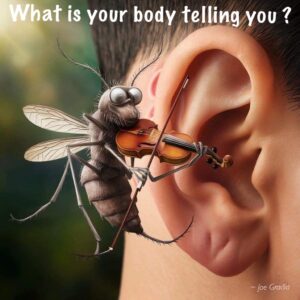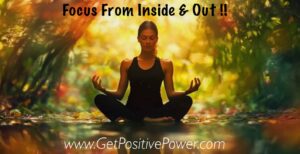 Learning to “listen” to your body—tuning into the signals it sends—is a vital skill for managing stress, preventing illness, and making healthier choices. Here’s a step-by-step approach:
Learning to “listen” to your body—tuning into the signals it sends—is a vital skill for managing stress, preventing illness, and making healthier choices. Here’s a step-by-step approach:
⸻
1. Build Mindful Awareness
• Pause regularly. Set an alarm or habit cue (e.g., at the top of each hour) to stop for 30 seconds.
• Take three slow breaths. Feel the air filling and leaving your lungs.
• Notice where you’re holding tension. Shoulders? Jaw? Belly?
⸻
2. Do a Body-Scan Practice
1. Find a quiet spot and sit or lie down comfortably.
2. Close your eyes and take a few grounding breaths.
3. Bring attention to your feet. Notice warmth, pressure, tingling—whatever is there.
4. Move upward slowly (calves → knees → thighs → hips → belly → chest → shoulders → arms → hands → neck → face).
5. At each spot, label the sensation (e.g., “tight,” “warm,” “ache,” “nothing”).
6. Breathe into any area of discomfort: imagine your breath flowing there to soothe.
Practice 5–10 minutes daily; you’ll start catching subtle signals—hunger pangs, early tension, low energy.
⸻
3. Keep a Body-Awareness Journal
Whenever you notice a strong sensation, jot down:
• Time / Context (e.g., 3 PM, after a meeting)
• Sensation (headache, yawning, stomach grumble, racing heart)
• Intensity (rate 1–10)
• Likely Cause (stress, skipped lunch, dehydration)
• Action Taken (drink water, stretch, walk, rest)
Over a week, you’ll see patterns (e.g., headaches at 4 PM = dehydration).
⸻
4. Track Your Basic Needs
Your body talks loudest through:
• Hunger & fullness. Do you eat only when starving? Try checking in at mild hunger/fullness (3 or 7 on a 1–10 scale).
• Thirst. If mouth feels dry or you’re tired mid-afternoon, pause for a glass of water.
• Rest & sleepiness. Yawning, heavy eyelids, or foggy thinking? That’s a “sleep” signal. Honor it with a nap or earlier bedtime.
• Bathroom habits. Noticing your bladder or bowels signals hydration, diet, or stress levels.
⸻
5. Notice Emotional-Physical Links
• Anxiety often shows as tight chest, racing heart, upset stomach.
• Sadness may feel like a heavy chest or lump in the throat.
• Anger can manifest as clenched jaw, fists, or flushed face.
When an emotion arises, ask:
“What’s happening physically right now?”
Label it (“My chest feels tight”) and then choose a soothing response (deep breaths, a short walk, talking it out).
⸻
By Joe Gradia
 Focusing inside and out means mastering your inner world (mind, emotions, energy) and your outer world (actions, relationships, environment). It’s about being aligned—what you think, feel, and do all point in the same direction.
Focusing inside and out means mastering your inner world (mind, emotions, energy) and your outer world (actions, relationships, environment). It’s about being aligned—what you think, feel, and do all point in the same direction.